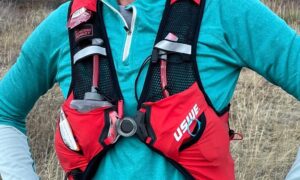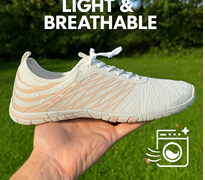Meta Title: Choose Right On Cloud Shoes for Your Running Style
Meta Description: Master selecting the perfect On Cloud running shoes for your style. Expert guide covers gait analysis, terrain, and performance matching tips.
Slug: choose-right-on-cloud-shoes-running-style-guide
Decoding Your Running DNA: The Foundation for Perfect Shoe Selection
Every runner possesses unique biomechanical characteristics that influence their ideal footwear requirements. On cloud technology offers diverse solutions tailored to different running styles, gait patterns, and performance goals. Understanding your individual running profile serves as the crucial first step in selecting the perfect Swiss-engineered performance partner.
Furthermore, runners often overlook the importance of matching shoe characteristics to their specific needs and preferences. Generic recommendations rarely address the nuanced requirements that separate casual joggers from competitive marathoners. Consequently, investing time in proper analysis ensures optimal performance and injury prevention throughout your running journey.
Gait Analysis Fundamentals: Understanding Your Natural Movement Pattern
Professional gait analysis reveals critical information about your foot strike pattern, pronation tendencies, and stride characteristics. Heel strikers benefit from enhanced cushioning in the rear portion of the shoe, while forefoot strikers require responsive toe-off capabilities. Additionally, understanding your pronation pattern helps determine the appropriate level of stability features needed.
Overpronators typically require additional medial support to prevent excessive inward foot rolling during the stance phase. Neutral runners enjoy the flexibility of choosing from a broader range of shoe options without specific stability requirements. Moreover, supinators need cushioning and flexibility to compensate for their naturally rigid foot structure and limited shock absorption capabilities.
Terrain-Specific Selection: Matching Shoes to Your Running Environment
Different running surfaces demand specific shoe characteristics to optimize performance and safety. Road runners prioritize lightweight construction, responsive cushioning, and durable outsole compounds that withstand repetitive pavement contact. Trail enthusiasts require aggressive tread patterns, protective toe caps, and enhanced stability features for uneven terrain navigation.
Track athletes benefit from lightweight, responsive designs that maximize energy return during speed work and interval training. On cloud shoes testing protocols evaluate performance across various surface types to ensure appropriate recommendations. Indoor treadmill runners can focus primarily on comfort and cushioning since surface consistency eliminates many terrain-related concerns.
Distance Determination: Aligning Shoe Features with Training Volume
Training volume and typical run distances significantly influence optimal shoe selection criteria. Short-distance speedwork requires responsive, lightweight options that prioritize energy return over maximum cushioning. Marathon training demands enhanced durability, superior cushioning, and features that maintain comfort during extended mileage accumulation.
Recovery runs benefit from maximum cushioning and comfort features that promote active recovery while minimizing additional stress on tired legs. Additionally, runners who log high weekly mileage need shoes that maintain their performance characteristics throughout extended wear periods. The construction quality becomes increasingly important as training volume increases beyond recreational levels.
Performance Goals: Matching Technology to Running Objectives
Competitive runners prioritize speed-enhancing features like responsive midsole compounds and aerodynamic design elements. Recreational fitness runners typically value comfort, durability, and injury prevention over pure performance characteristics. Additionally, rehabilitation runners require specific features that support recovery while gradually building strength and endurance.
Weight loss runners benefit from enhanced cushioning and stability features that provide confidence during longer, slower-paced sessions. Social runners often prioritize comfort and style versatility since their shoes serve multiple purposes beyond pure athletic performance. Furthermore, cross-training athletes need versatile designs that perform adequately across various exercise modalities.
Fit Precision: Achieving the Perfect Size and Shape Match
Proper fitting extends far beyond simple length measurements to include width, arch height, and toe box volume considerations. Runners with wide feet require specific last shapes that accommodate broader forefoot dimensions without compromising performance. High-arched runners need additional arch support and cushioning to compensate for reduced natural shock absorption.
Flat-footed runners benefit from motion control features and structured support that enhance stability during dynamic movements. On shoes sizing often differs from casual footwear, requiring careful attention to manufacturer-specific fitting guidelines. Additionally, considering foot swelling patterns throughout the day ensures comfortable fit during typical running times.
Technology Integration: Understanding CloudTec Variations and Applications
Different CloudTec configurations serve specific running applications and performance requirements. Softer cloud compounds provide enhanced comfort for recovery runs and longer distance training sessions. Firmer cloud setups deliver superior energy return and responsiveness during speed work and competitive efforts.
Hybrid configurations combine multiple cloud densities to provide versatile performance across various training scenarios. The number and arrangement of cloud pods influence the shoe’s overall ride characteristics and performance profile. Moreover, understanding these variations helps runners select models that align with their primary training focus and secondary performance needs.
Seasonal Considerations: Adapting to Weather and Training Conditions
Weather conditions significantly impact optimal shoe selection throughout the annual training cycle. Summer running requires enhanced breathability and moisture management to maintain comfort during hot, humid conditions. Winter training often demands improved traction and weather resistance for safe navigation of challenging surface conditions.
Rainy season preparations include selecting shoes with superior drainage capabilities and quick-drying materials that maintain performance in wet conditions. On cloud shoes feature various seasonal adaptations that address specific weather-related challenges while maintaining core performance characteristics. Additionally, transitional seasons may require multiple shoe options to address varying daily conditions effectively.
Conclusion
Selecting the ideal Swiss running companion requires careful consideration of your unique biomechanical profile, training environment, performance goals, and seasonal requirements to ensure optimal comfort and performance enhancement. The sophisticated CloudTec technology offers diverse solutions that can accommodate virtually any running style when properly matched to individual needs and preferences. By systematically evaluating your gait pattern, terrain preferences, distance goals, and fit requirements, you can confidently choose the perfect model that transforms your running experience from ordinary to extraordinary. This comprehensive approach to shoe selection represents an investment in your long-term running success, injury prevention, and overall enjoyment of the sport that will reward you with countless miles of comfortable, efficient performance.



































